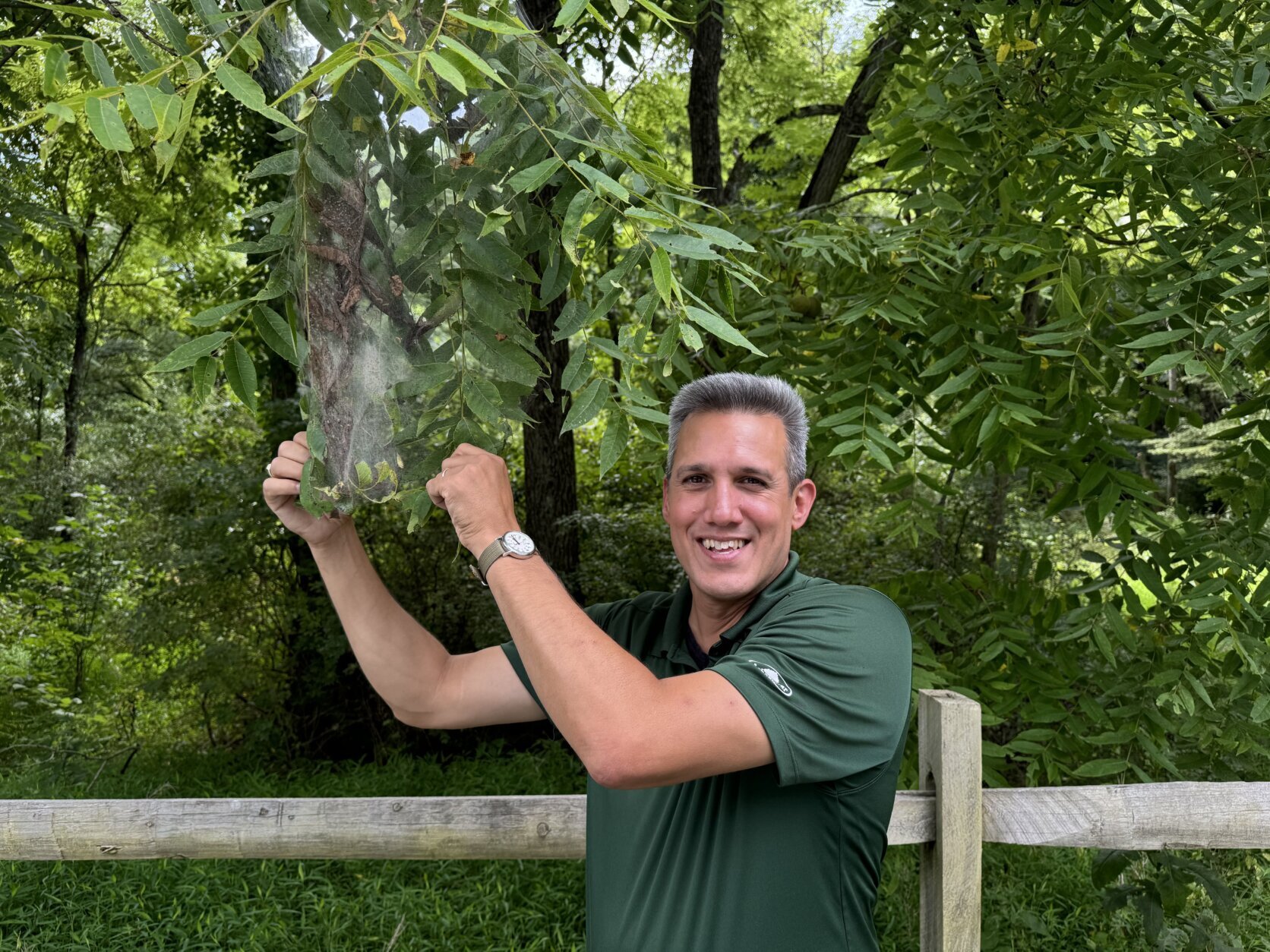
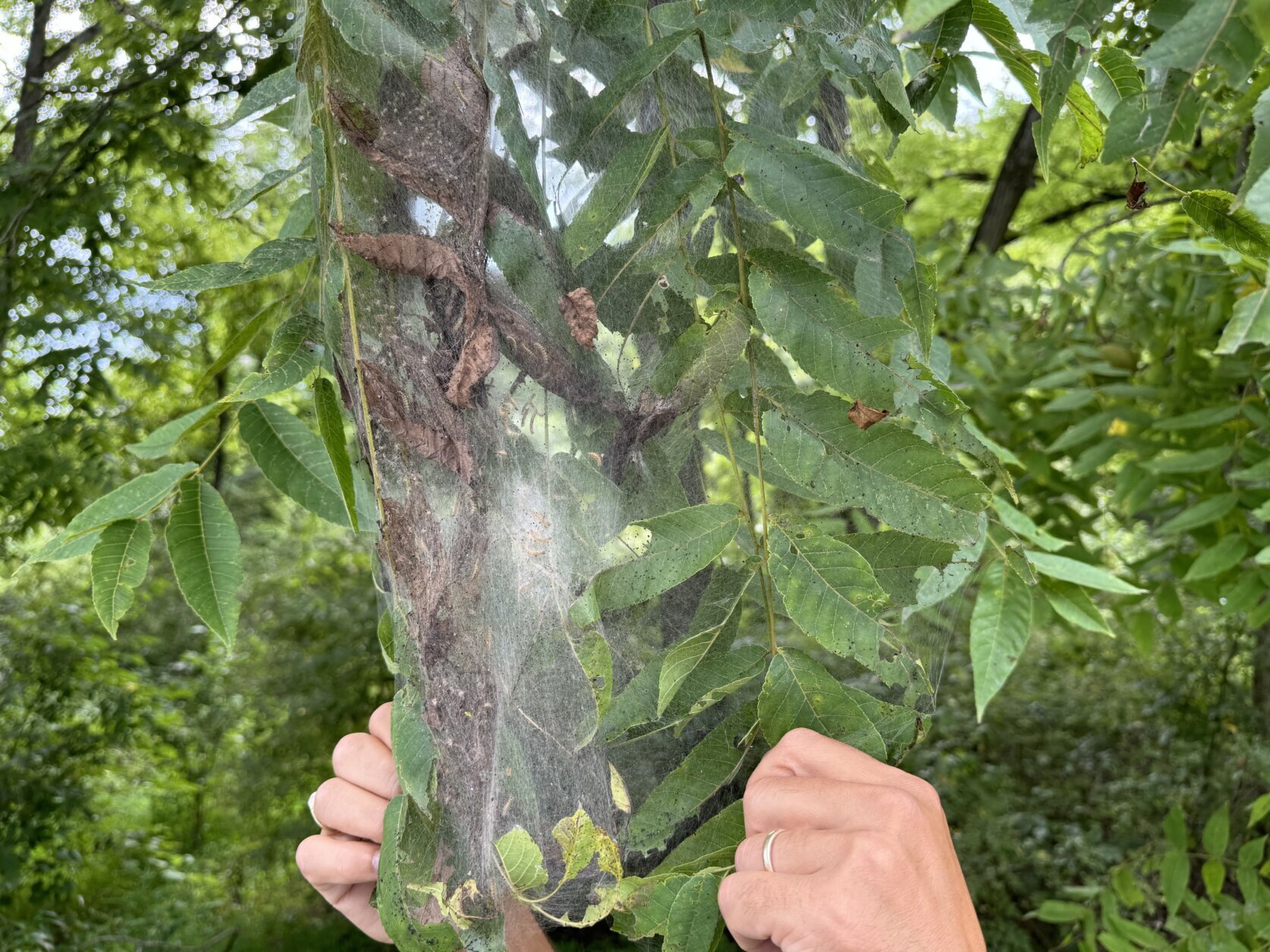
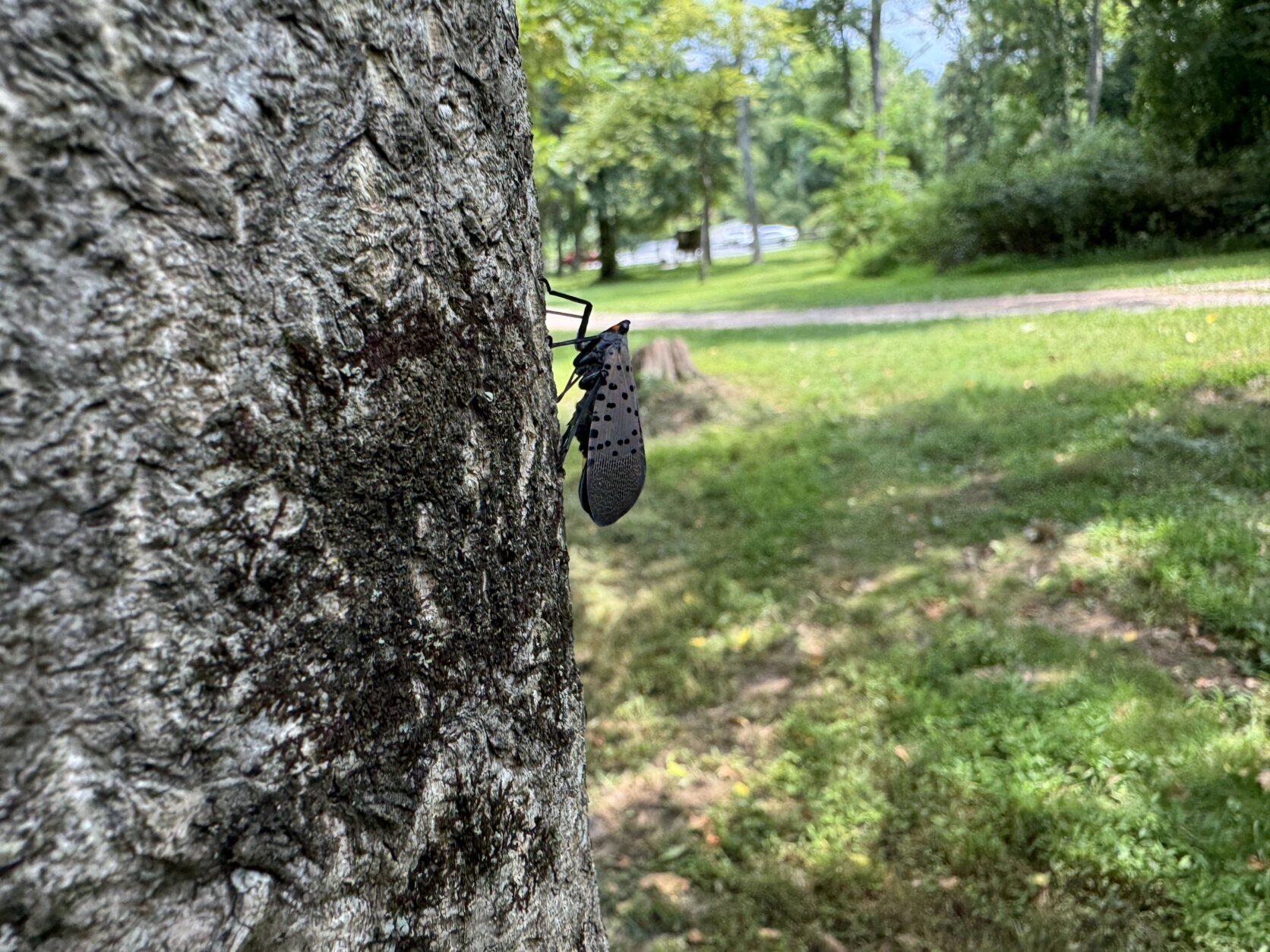
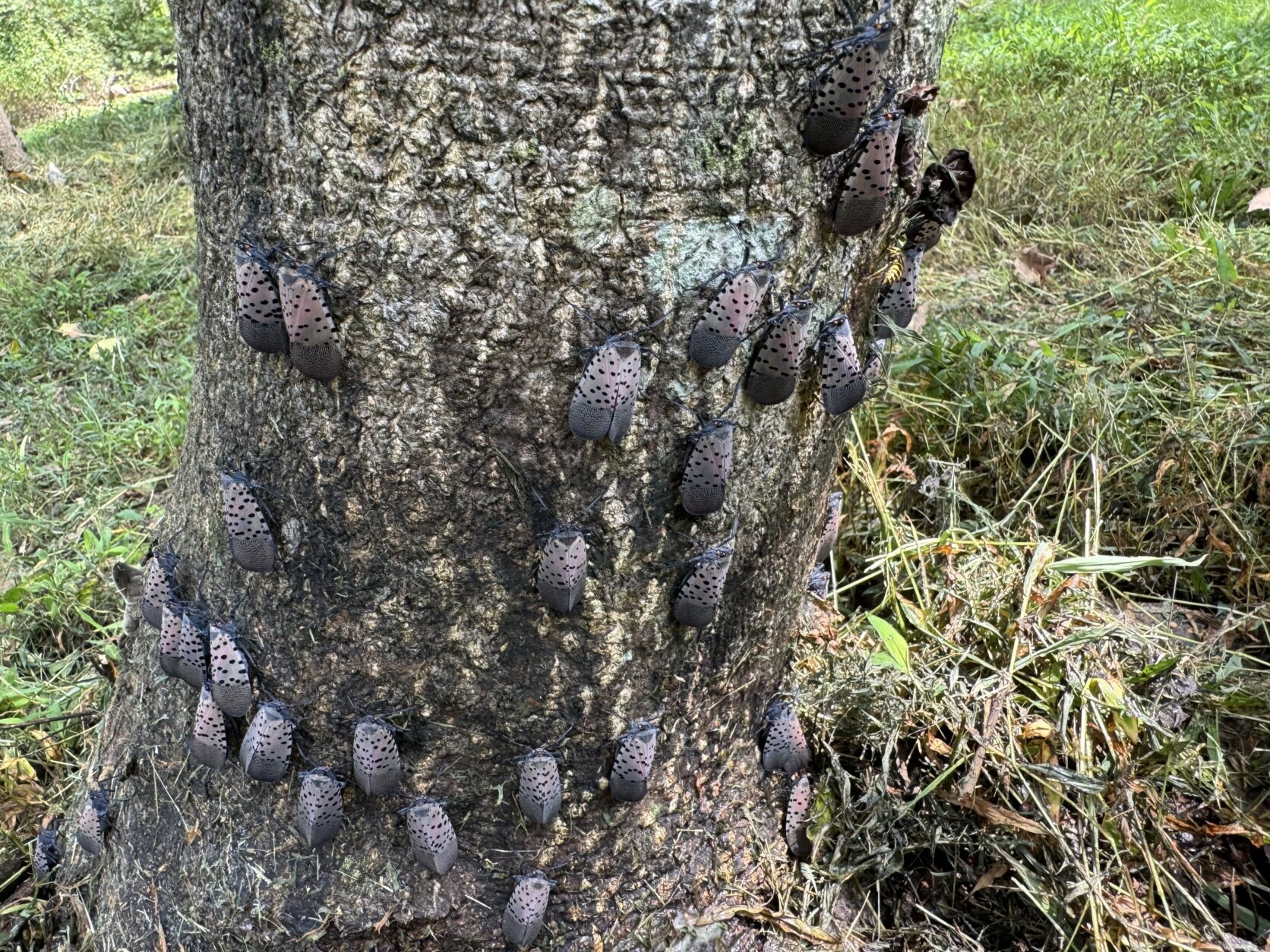
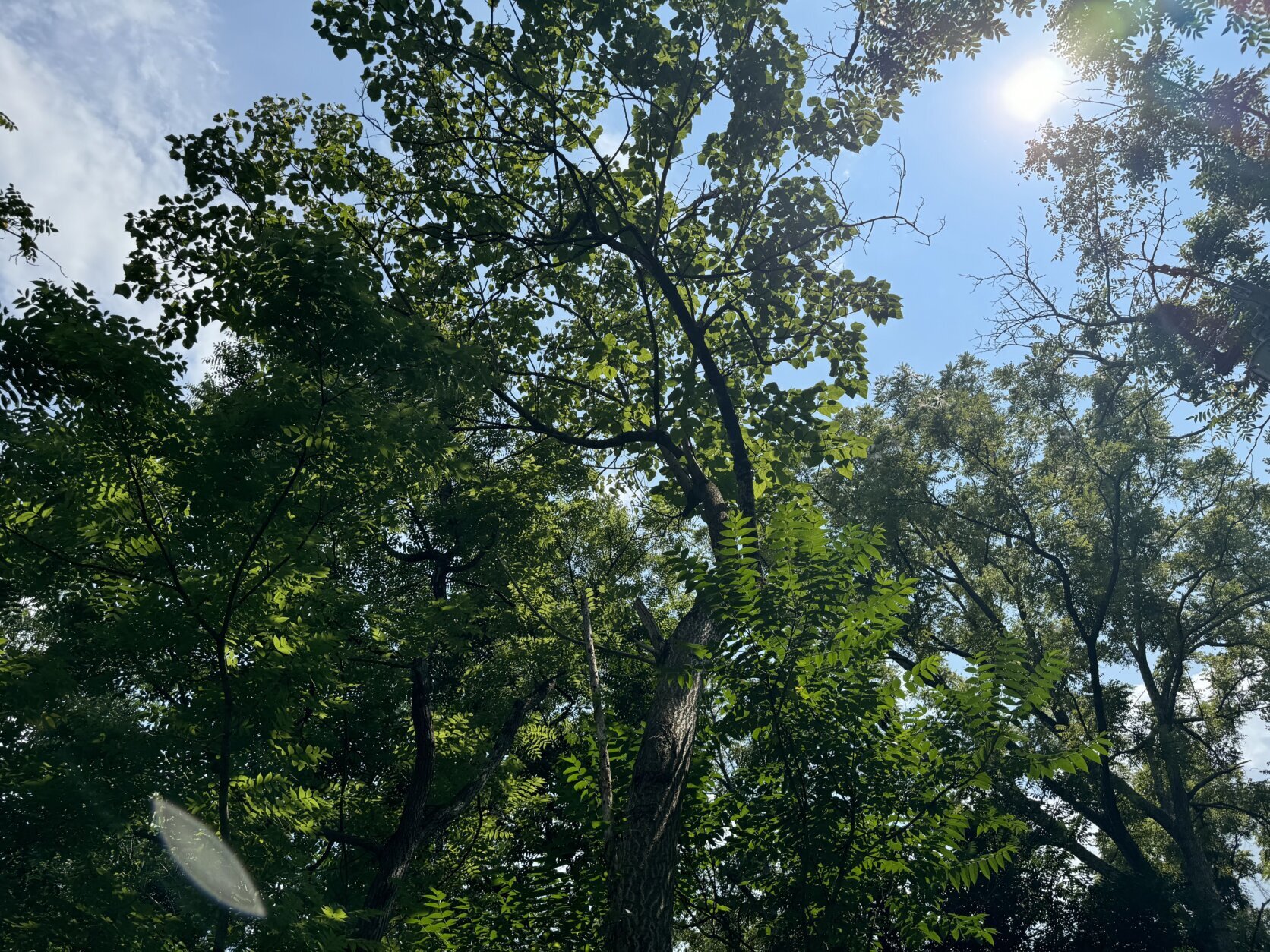
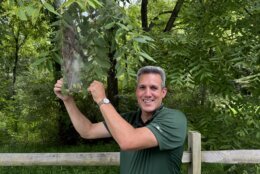
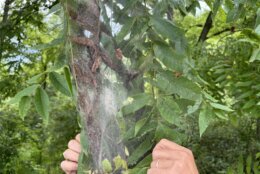
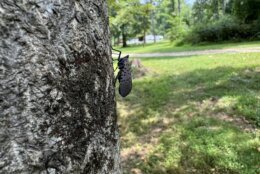
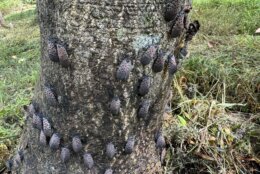
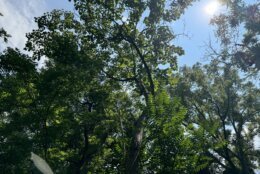
This video is no longer available.
Some bugs are OK, others are not, and the same goes for trees growing in the D.C. region. What should you be on the lookout for?
During a walk-through at Patuxent River State Park, Davey Tree Expert Company arborist Lou Meyer points to an ailanthus tree, also known as the tree of heaven, and how it’s covered with insects with spotted wings, known as spotted lanternflies.
“They love feeding on the sugars, the carbohydrates, that the tree is producing,” said Meyer.
Meyer said the spotted lanternfly was first spotted in Pennsylvania in 2014. It’s believed they came into the U.S. by hitching rides on cargo from Asia.
As Meyer tells the story of the bug, which has spotted wings that are bright red when spread, what look like rain drops begin to fall. But unfortunately it’s not rain. It is the bug excreting or “pooping” out a clear sticky substance known as honeydew, Meyer said.
“On a heavily infested tree, it looks like it’s raining on a clear day,” Meyer said.
For homeowners, the drops can harm clear coats on cars and leave black sooty mold growing on surfaces where the goo sits for too long.
He said one interesting development with the bug as it adapted to life in the U.S. is it took a liking to one specific tree, the ailanthus tree, which is also an invasive species of tree. Also, native birds after ignoring the bugs have discovered they’re good eating.
“Now they’re starting to eat them, so nature is starting to find more of a balance,” Meyer said.
Despite all this, the insect does weaken trees and remains a big problem for vines, which makes it a major problem for vineyards and farmers growing hops for beer. For that reason, work continues to control the population and homeowners are encouraged to kill them. Meyer said there are effective treatments that can be used around homes to combat them.
Web worms, dog-day cicadas
Another bug Meyer was on the lookout for, but fortunately didn’t find, is the emerald ash borer, which decimated the Ash tree population beginning in the early 2000s. The female beetle lays eggs inside the tree and her young do the damage.
“When the larva are in there, they feed on the sugars of the tree and they end up plugging up the vascular system, which then kills the tree in the end,” Meyer said.
He said the telltale signs of the emerald ash borer are the holes the beetles larvae leave behind, which are a distinctive D or semicircle shape.
Meyer said two other types of bugs lead to calls from worried homeowners: the fall webworm and the dog-day cicadas. But he said there is no need to fret about those.
The fall web worm’s strong web which surrounds tree branches can look worrisome, so can the caterpillars inside the web but Meyer says despite their appetite for leaves as they grow into moths, they are not going to lead to trees’ demise.
“You think leaf damage would affect the tree but it’s such a minimal amount that the overall health of the tree is absolutely fine,” Meyer said.
The buzz in the afternoon you hear is most likely the dog-day cicada, which Meyer said are always around and don’t just show up in big swarms years apart like others. He said the insects do feed on the roots of the trees, but they do it over such a long period, the damage is minimal.
“They’re actually beneficial when they die and they fall back to the soil they biodegrade and return nutrients when they come up out of the soil,” he said.
Tree of heaven
Meyer also pointed out there are invasive tree species that people should be aware about, and a few of those trees could be found in the park.
The ailanthus tree — the one covered in spotted lanternflies — is one. The tree, which is also native to Asia, grows rapidly and crowds out native trees. The tree has long stems with 12 to 15 leaves coming off and looks like a walnut tree.
The other tree spotted was the invasive Paulownia tree, which is also from Asia. During spring, the tree will have pretty purple flowers, but it’s also a “forest pest” that out competes native plants and trees, Meyer said.
“It was brought here much like other invasive species as an aesthetic boost to our landscape, but it has since escaped into nature and procreates wildly,” Meyer said.
Callery pear: No sweet treat
Along Georgia Avenue, Meyer pointed out another invasive species, the Callery pear, which spreads rapidly — and doesn’t grow delicious fruit. The trees hold their leaves longer than native species and shade out other plants, preventing other trees from growing.
“They take over everything,” Meyer said.
According to Meyer, the small “pears” it grows also lack any nutritional value, which can lead to migratory birds eating them and “falling out of the sky” during their long trips.
“It’s like you or me eating a bunch of Snickers bars and then running a marathon,” he said.
Also, the bids droppings transfer the seeds from the plant.
While not a tree, Meyer also pointed out the park’s bamboo problem, and said this introduced plant grows fast into dense forests of stalks and they are hard to eradicate.
“You either have to rip up the root systems completely, or you cut it and spray it with herbicide,” he said.
Meyer said while homeowners should be careful what they plant, not all nonnative species are bad to have. He cites the popularity of the Kousa dogwood which is not invasive.
“It’s just good to find a balance between native species and nonnative species,” he said.
Get breaking news and daily headlines delivered to your email inbox by signing up here.
© 2024 WTOP. All Rights Reserved. This website is not intended for users located within the European Economic Area.








